Description
Eastern Rosella for Sale
Eastern Rosella for Sale,the Golden mantled Rosella or Cecilia’s Rosella is an active bird and a very skillful flyers. They love to play, climb, and chew. Though they are not great talkers they can be quite vocal. They are also very hardy, very resistant to disease, and are not difficult to feed and care for. Once they are established with an acceptable mate, they are easy to breed. All the Rosellas, including the Golden-mantled Rosella or Cecilia’s Rosella are very energetic. They are a more difficult bird to tame, requiring a lot of consistent firm training and close interaction. For this reason, they are not really considered to be a beginners bird.
The nature of Rosellas is one of aggression toward other rosellas and other parakeets, as well as other parrot-like birds. It is not recommended to house them together unless as a breeding pair or to house them in adjoining aviaries or cages. They are so bickery they will even bite at the sides of the cage if next to each other.
Care and Feeding of Eastern Rosella for Sale
Fresh food and water must be provided daily.
Eastern Rosellas eat a variety of seeds and blossoms, berries and fruits, nuts, blossoms, leaf buds. They feed both in the treetops and on the ground. Their diet consists of a good seed mixture supplemented with sprouted seed, various fruits, and green foods. In addition to these foods, you can offer them vegetables and commercial pellets.
They also enjoy the same nutritional foods humans eat, including cooked chicken. Cooked beans, rice, and grains are also enjoyed, but soft foods like these will spoil in about 4 hours. An occasional millet spray is a nice treat. The Golden-mantled Rosella should also be offered grit with charcoal.
A standard diet for a rosella should include lots of fruit and vegetables, and some healthy table foods. Your hand-fed, tame rosella might sit on your shoulder at the dinner table, and will be quite well behaved, unlike many birds that will tend to wander. This is a good way to reinforce the bond between you and your bird, and you can feed him tidbits from you plate. These birds are reported to live for more than 25 years if cared-for properly.
Social Behaviors
The first thing that many owners notice is how intelligent these birds really are. Eastern Rosella has an interesting personality that can surprise you all the time- and they often get a bit naughty. Of course, you can always bribe them with a tasty almond or a bit of fruit to get in their good graces again! But, in general, these are energetic and playful little parrots that are quick to learn. All that is required from the owner is patience, and in time a deep bond will be created. And just like that, you too will fall prey to the charm of these unique Australian parrots.
In captivity Eastern Rosellas are very aggressive toward other rosellas and parakeets, as well as other parrot-like birds. It is not recommended to house them together unless as a breeding pair. Do not even house them in adjoining aviaries or cages as they are so bickery, they will bite at the sides of their cage.
Maintenance
The basic cage care includes daily cleaning of the water and food dishes. Weekly you should wash all the perches and dirty toys, and the floor should be washed about every other week. A total hosing down and disinfecting of an aviary should be done yearly, replacing anything that needs to be freshened, such as old dishes, toys and perches.
Eastern Rosella Habitat
Eastern Rosellas are found in open woodlands, grasslands, farmlands and remnant bushland. Often found in urban habitats such as parks, gardens and golf courses.
Temperament
The eastern rosella does not enjoy being cuddled with and can get nippy when it is handled with in the wrong way. If you want it to be completely tame, you must interact with your pet as much as possible. Some individuals can never be fully tamed and turn out to still have the wild streak in them after years of being domesticated.
Breeding/Reproduction
All rosellas are easily bred, and the Golden-mantled Rosella breeds twice a year on average. They make their nests in the hollows of trees or stumps in the wild. Each couple will require two nesting boxes to choose from.
Once the nest box is chosen, the female will lay four to nine eggs, with the average being five. The eggs are brooded by the female. The eggs hatch in 18 to 20 days and the chicks depart the nest in about 5 weeks. They will stay with their parents for several months in the wild unless there is another mating, however it is recommended that you remove the young around a month after they are on their own in captivity.
Sound / Vocalizations
Rosellas are often noisy, except when feeding, which is typically done in silence. When roosting in groups, soft chattering or high pitched rapid ‘pi-pi-pi-pi-pi’ contact calls can be heard. Their alarm calls are shrill and screechy. In flight, they make ‘kwik, kwik’ vocalizations.
Rosellas are not known for much talking ability but they can mimic whistles and songs. Though they do not have a true song they do have several melodious calls. Similar to a louder Red Rump, it is much more pleasant than the shrill and harsh sounds of Conures, Cockatoos or Macaws.
Appearance
The Eastern rosella has a red head and white cheeks. The beak is white, and the irises are brown. The upper breast is red, and the lower breast is yellow fading to pale green over the abdomen. The feathers of the back and shoulders are black and have yellowish or greenish margins giving rise to a scalloped appearance that varies slightly between the subspecies and the sexes.
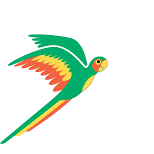
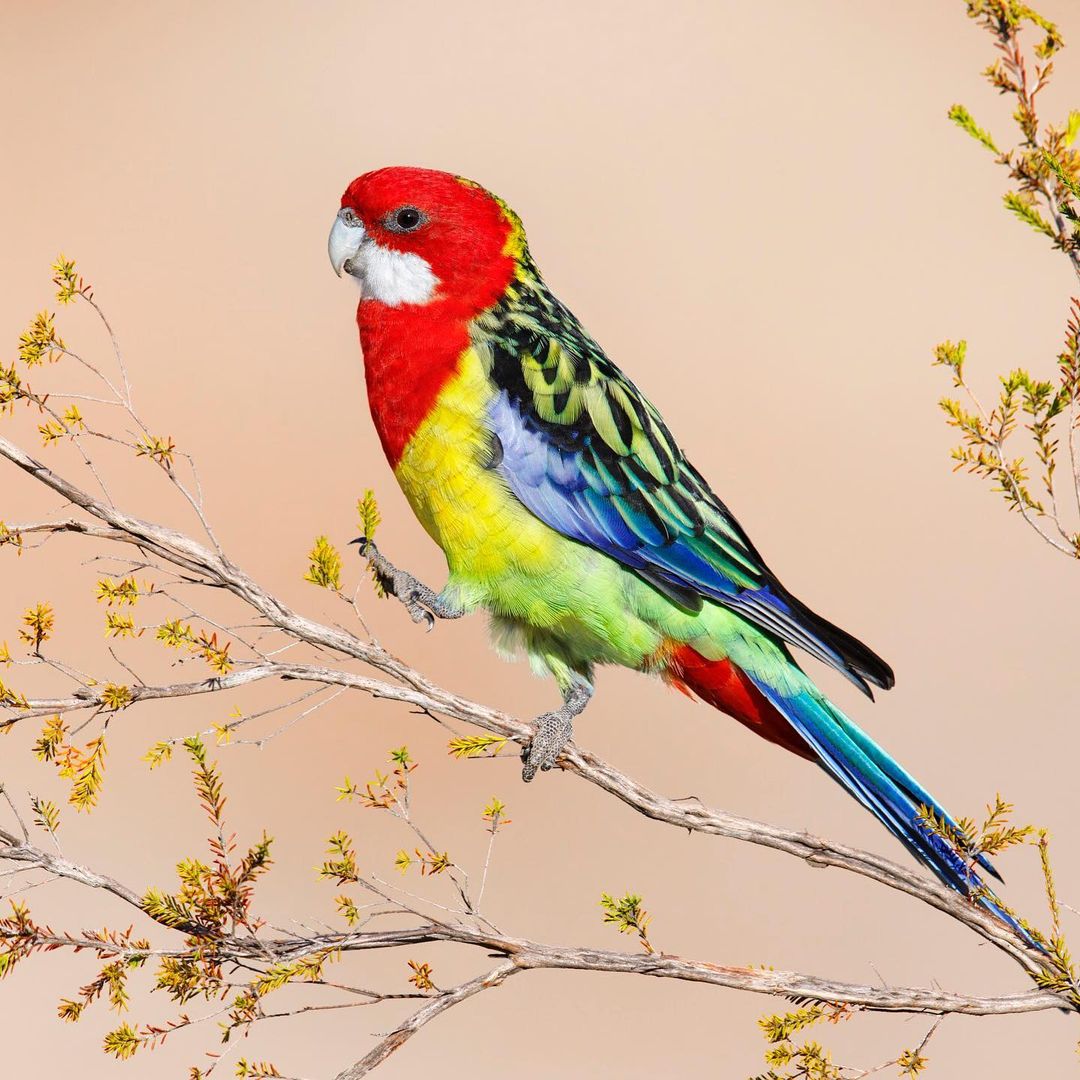

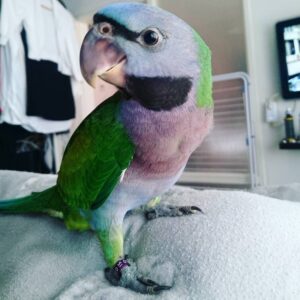
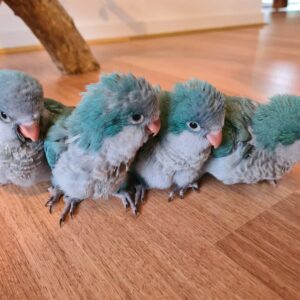
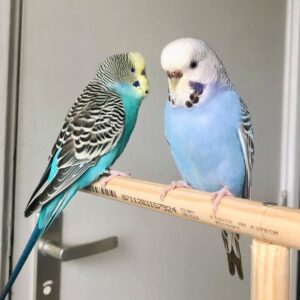
Reviews
There are no reviews yet.